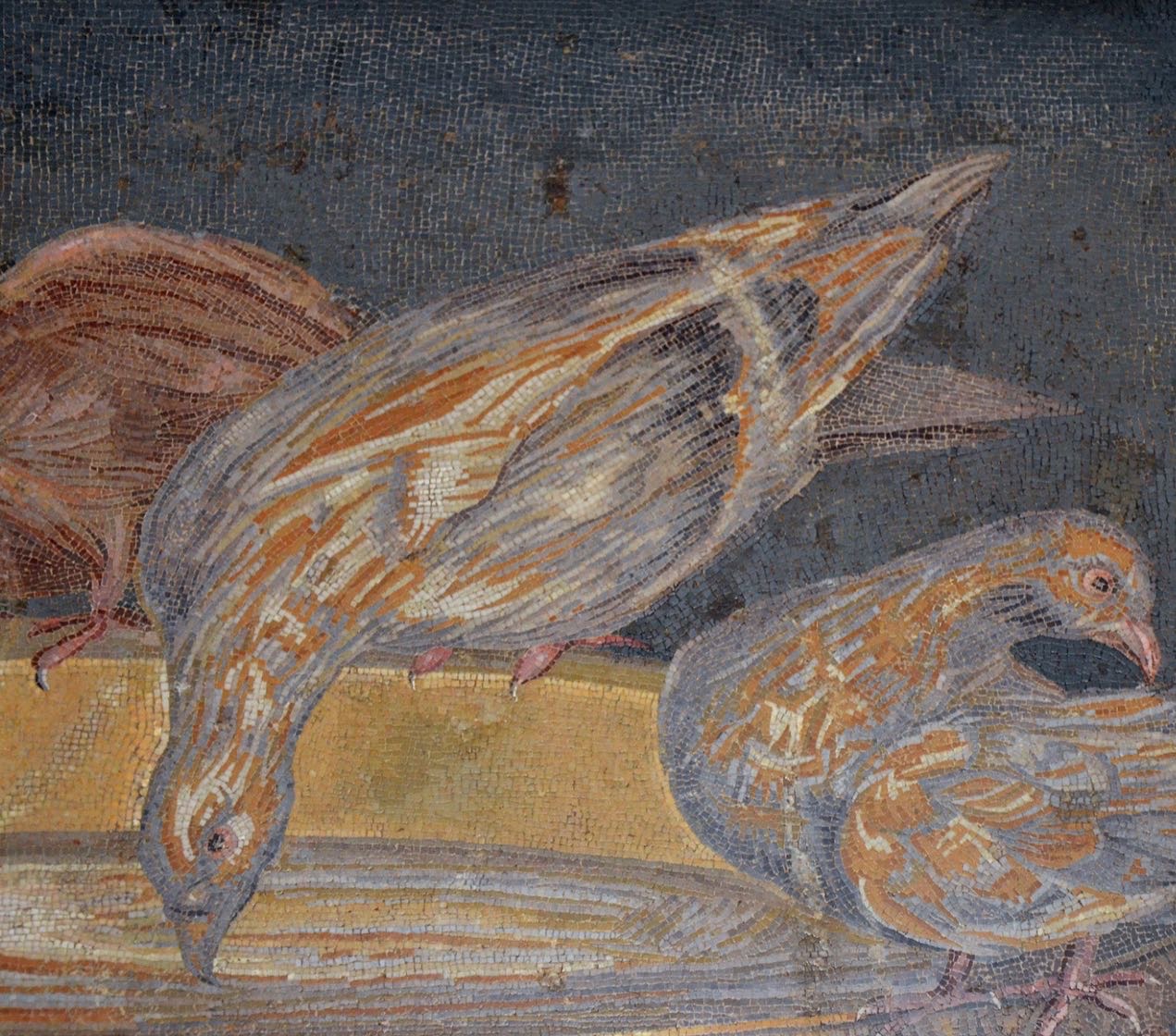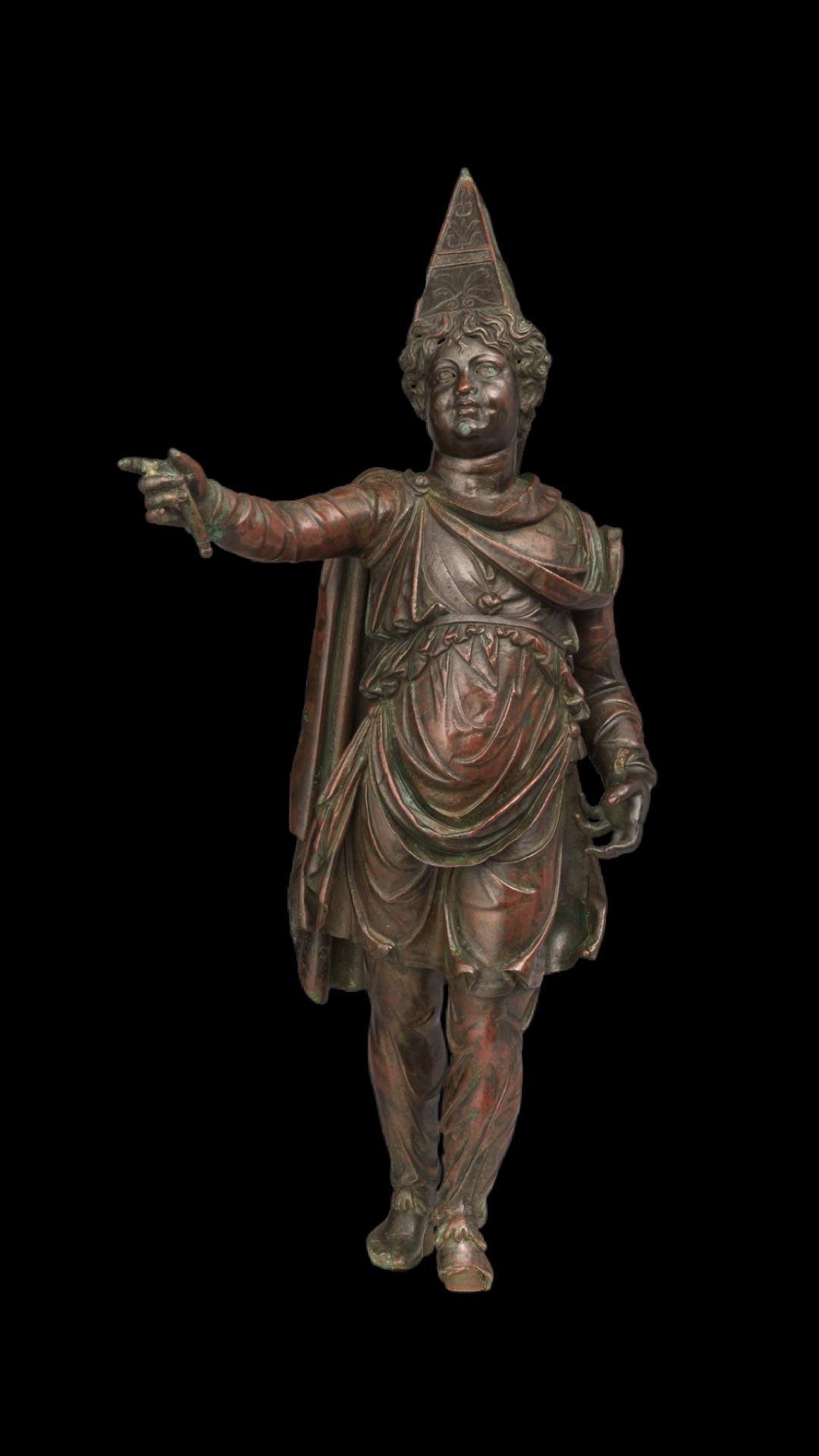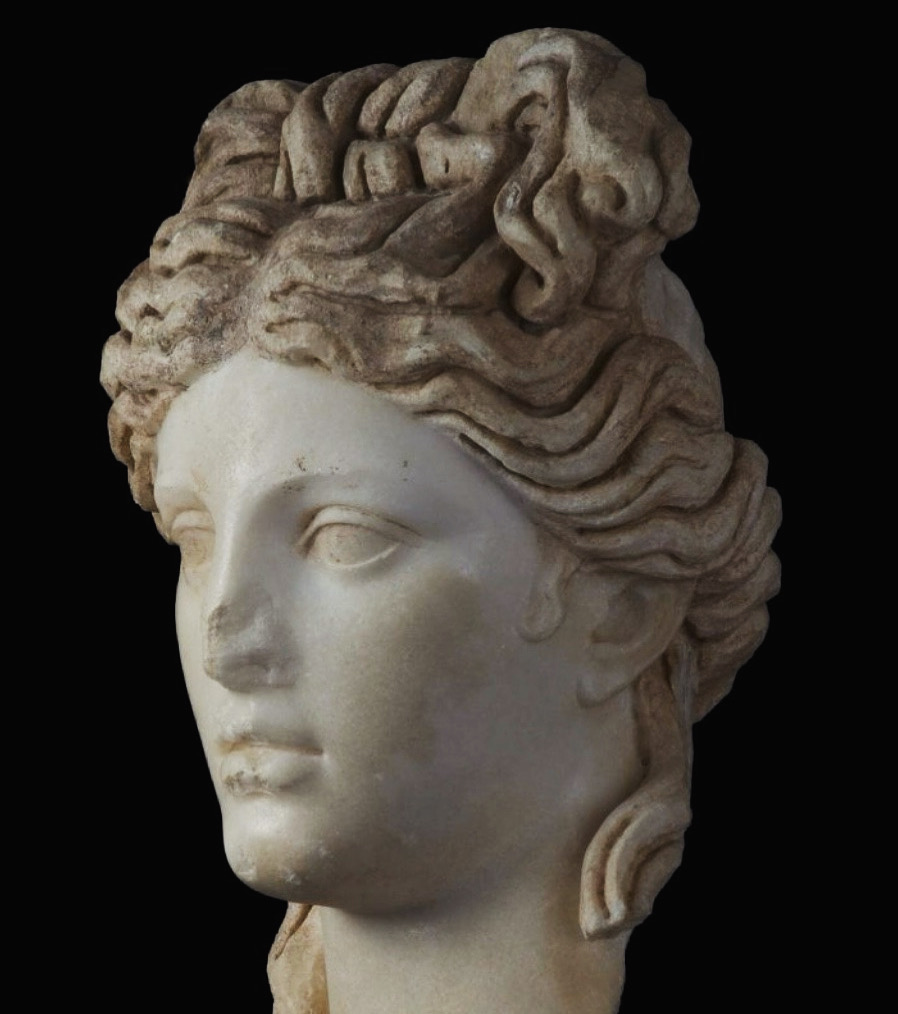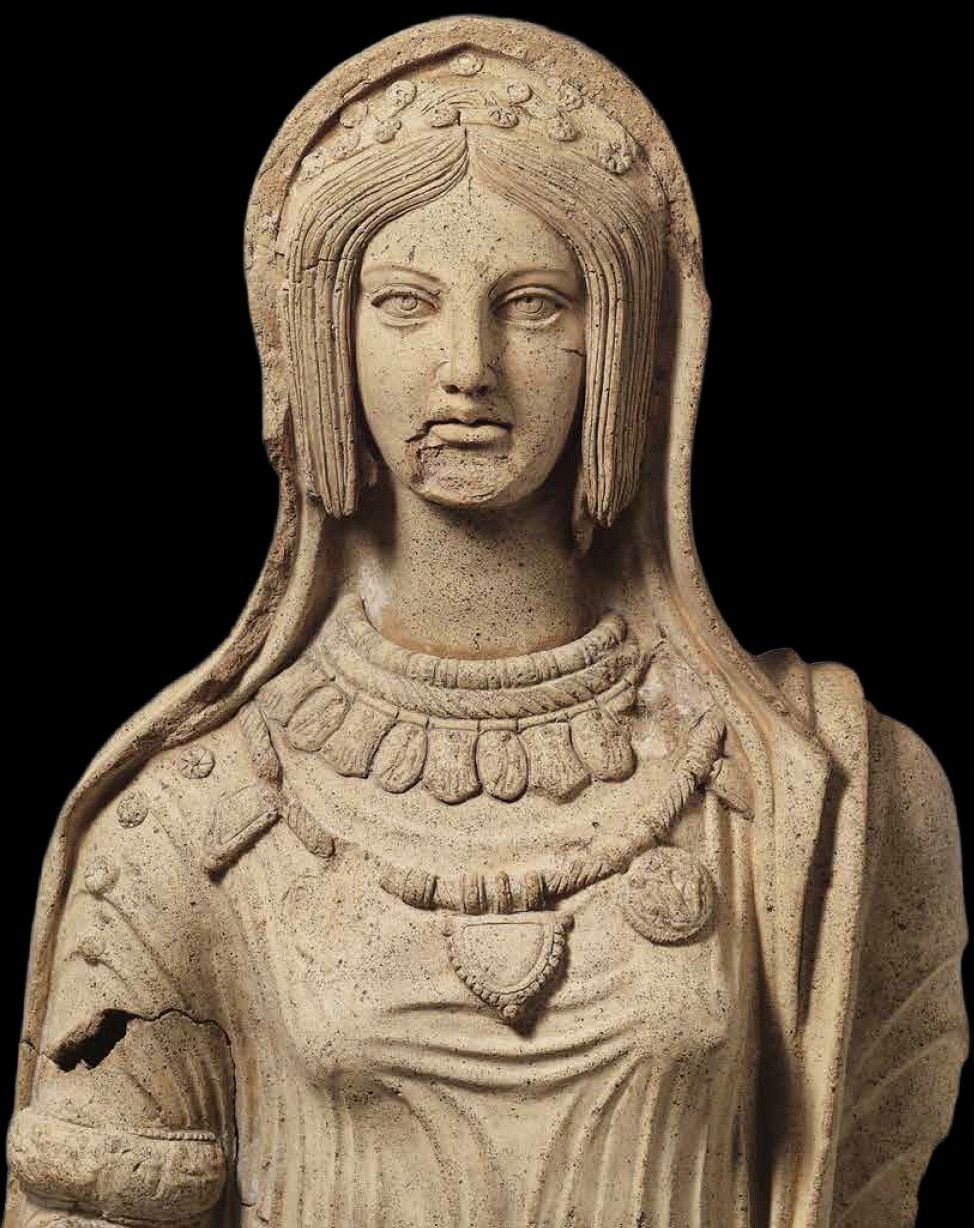When of the highest quality, mosaics are truly painting with stone – an appealing notion. The height of this art (opus vermiculatum) occurred during the Hellenistic period, specifically in Pergamon, where the mosaicist Sosus (the only one named from antiquity) carried out commissions for the royal palaces.
One of his masterpieces was the “unswept room” (discussed in a previous post), but perhaps the best known was an emblema inset into a mosaic surround showing preening doves at a basin. The original from Pergamon does not survive, but copies of the doves exists in droves (word-play intended!), with the finest having been found at Hadrian’s Villa (now in the Capitoline Museums). And it stands to reason that Hadrian, that hairy hellenophile, would have chosen this famous subject for his villa.

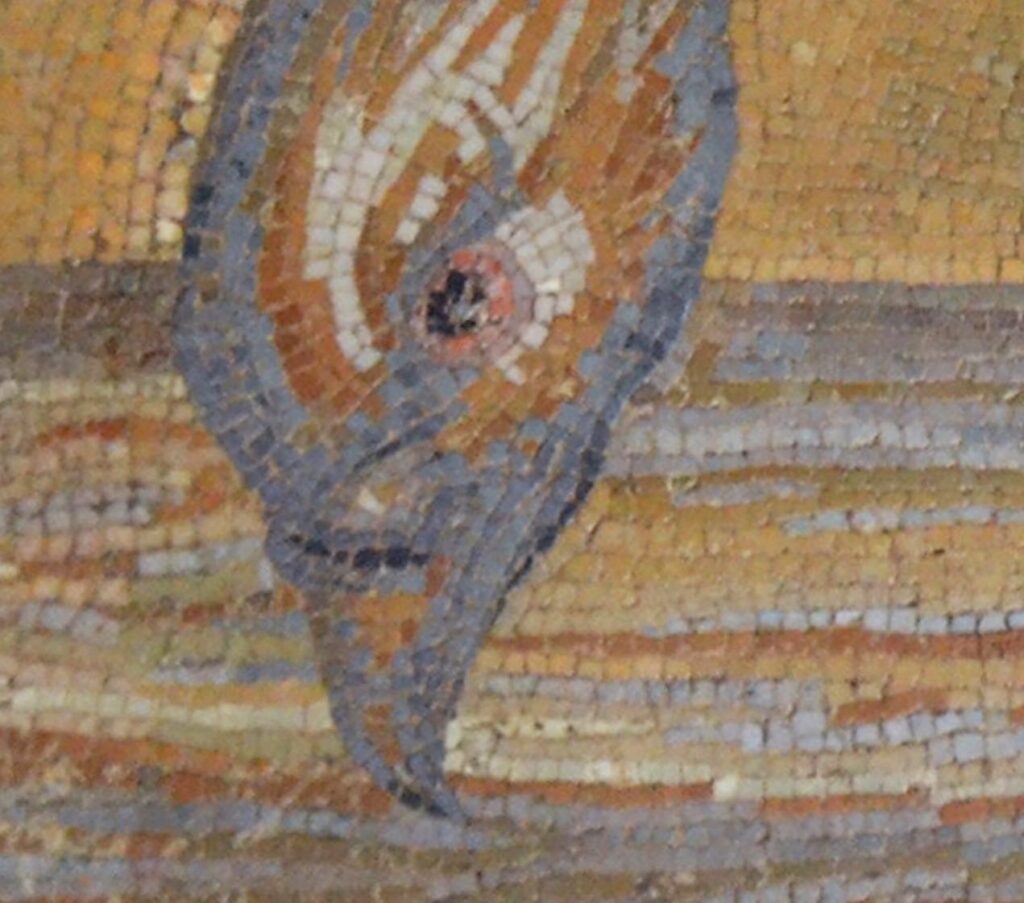
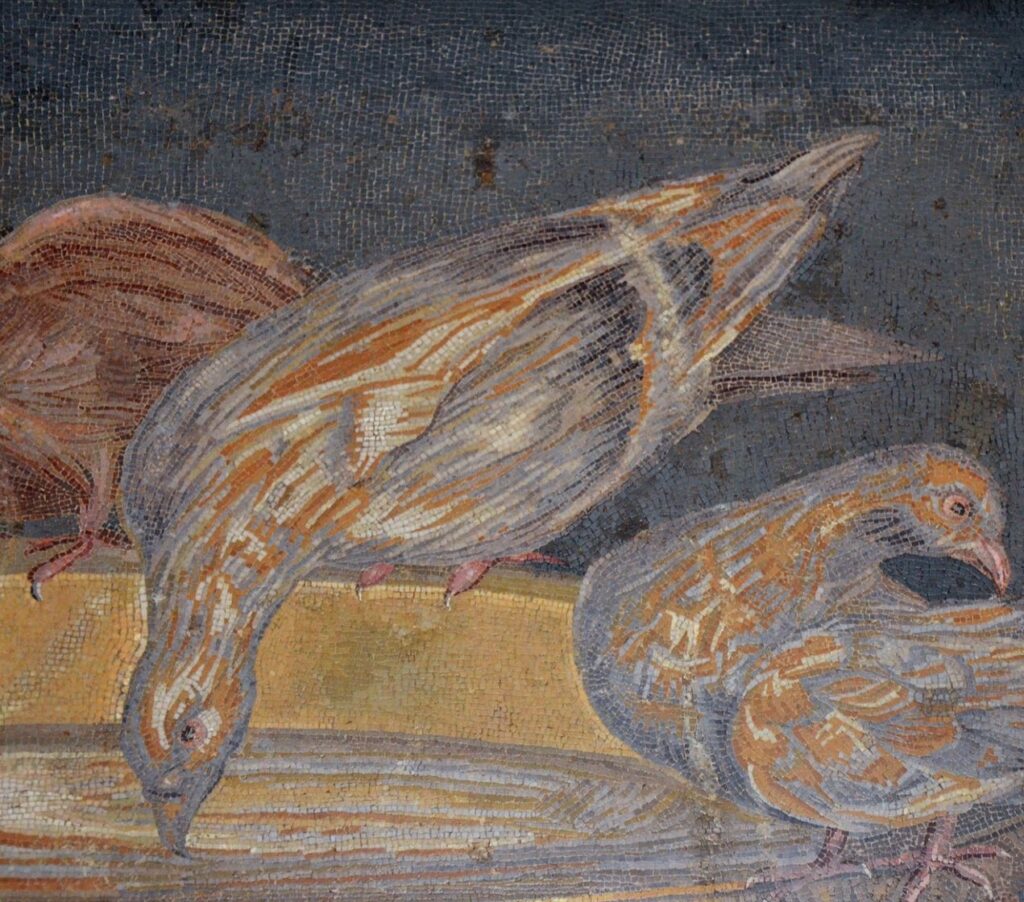
It’s a virtuoso, best of kind! Just as Pliny described, the doves are perched around the basin (the lustre of the bronze palpable). One dips down for a drink, perhaps peering at its own reflection in the water, while the rest preen and sun themselves delicately. As displayed at the Capitoline it is possible to get up close and personal, whereas at Pergamon (and then at Tivoli) it would have been the centrepiece of a very fancy floor. I will be observing pigeons (doves with fewer pretensions?) today with great interest, and more than usual appreciation…

